Africa · Attractions · Going Out · Morocco · Regions
Top 6 places to discover in Morocco beyond Marrakesh
Marrakesh has become a popular destination for those seeking a long weekend exploring a different culture, taste new foods and bartering for leather bags and lanterns in the souqs. However, away from this whirlwind city, theres a calmer side to Morocco. Explore the fabled narrow streets of Fezs medina, tuck into freshly caught fish around Essaouiras historic port and camp beneath countless stars in the Sahara Desert to reveal the real Morocco.
Fez
One of the most important cities in the Arab world, and the capital of Morocco until 1925, Fez has an authenticity thats sometimes lost in Marrakesh. Entering its 9th-century medina (a UNESCO World Heritage Site) is like diving into the past. Streets get narrower and the noise of traffic is replaced with the clopping of hooves and the cries of vendors selling babouche shoes, spices and all manner of food.
 A guide will tell you about the citys history while leading you through the maze of alleyways. Along the way, youll unexpectedly arrive at intricately decorated mosques, madrasas (Islamic school buildings) that have been standing for centuries and huge tanneries that stretch out in a hive pattern below you. Joining a local family for a cookery lesson is a great introduction to Moroccos distinctive cuisine and life in Fez. Youll make a tagine, share mint tea and visit a local bakery, where families take their dough to be cooked in a communal oven.
The Sahara Desert
A visit to the desert adds another dimension to your Morocco trip, and the peace and seclusion here offer a stark contrast to Marrakeshs chaos. Venturing to the Erg Chebbi dunes, on the edge of the Sahara, does take a journey of several hours from whichever direction you approach. But riding a camel through golden dunes at sunset, gazing up at an uninterrupted night sky from your camp and rising early to watch the sun bring colour to the shifting sands are opportunities that dont often come your way.
During the day, you can visit a nomadic family who live in this harsh environment as their ancestors would have for centuries. Theyll welcome you into their simple but homely tents, which are made of camel skin or bamboo. With your guide acting as translator, youll be able to ask the family about their lifestyle and perhaps try weaving on their traditional loom, which the women use to make rugs for sale in the towns and cities.
Chefchaouen
Set in the Rif Mountain region in northern Morocco, Chefchaouen is renowned for its beauty and relaxed, Bohemian atmosphere. Nicknamed the Blue Pearl, the citys blue and white buildings are instantly recognisable and very photogenic. Chefchaouen acts as an antidote to Moroccos busier cities. It receives far fewer visitors than Marrakesh, and its countryside surroundings add to the tranquil atmosphere. Christians were only allowed to enter the city from 1920, and youll notice strong Arabic and Andalusian influences in the architecture and food, but without the French feel found elsewhere in Morocco.
A guide will tell you about the citys history while leading you through the maze of alleyways. Along the way, youll unexpectedly arrive at intricately decorated mosques, madrasas (Islamic school buildings) that have been standing for centuries and huge tanneries that stretch out in a hive pattern below you. Joining a local family for a cookery lesson is a great introduction to Moroccos distinctive cuisine and life in Fez. Youll make a tagine, share mint tea and visit a local bakery, where families take their dough to be cooked in a communal oven.
The Sahara Desert
A visit to the desert adds another dimension to your Morocco trip, and the peace and seclusion here offer a stark contrast to Marrakeshs chaos. Venturing to the Erg Chebbi dunes, on the edge of the Sahara, does take a journey of several hours from whichever direction you approach. But riding a camel through golden dunes at sunset, gazing up at an uninterrupted night sky from your camp and rising early to watch the sun bring colour to the shifting sands are opportunities that dont often come your way.
During the day, you can visit a nomadic family who live in this harsh environment as their ancestors would have for centuries. Theyll welcome you into their simple but homely tents, which are made of camel skin or bamboo. With your guide acting as translator, youll be able to ask the family about their lifestyle and perhaps try weaving on their traditional loom, which the women use to make rugs for sale in the towns and cities.
Chefchaouen
Set in the Rif Mountain region in northern Morocco, Chefchaouen is renowned for its beauty and relaxed, Bohemian atmosphere. Nicknamed the Blue Pearl, the citys blue and white buildings are instantly recognisable and very photogenic. Chefchaouen acts as an antidote to Moroccos busier cities. It receives far fewer visitors than Marrakesh, and its countryside surroundings add to the tranquil atmosphere. Christians were only allowed to enter the city from 1920, and youll notice strong Arabic and Andalusian influences in the architecture and food, but without the French feel found elsewhere in Morocco.
 You can stroll the narrow streets that wind up and down the hillside in both the old medina and the new town, stopping to browse locally made crafts such as woven baskets and woollen clothing. The fresh goats cheese sold here is delicious, and there are animated local markets where you can join in with everyday life in this part of Morocco.
The High Atlas Mountains
Just half an hours drive from Marrakesh, the High Atlas Mountains seem like a world away as hectic city streets are replaced with deep valleys, green sloping mountains and tiny villages terraced onto the steep hillsides. Home to North Africas highest peak, Jebel Toubkal, the High Atlas run across central Morocco and are easier to access than the Middle Atlas range in the north and Anti Atlas in the south. Roads wind around sheer-sided bends, giving you glimpses of rock-strewn rivers below where local people often wash their clothes.
You can stroll the narrow streets that wind up and down the hillside in both the old medina and the new town, stopping to browse locally made crafts such as woven baskets and woollen clothing. The fresh goats cheese sold here is delicious, and there are animated local markets where you can join in with everyday life in this part of Morocco.
The High Atlas Mountains
Just half an hours drive from Marrakesh, the High Atlas Mountains seem like a world away as hectic city streets are replaced with deep valleys, green sloping mountains and tiny villages terraced onto the steep hillsides. Home to North Africas highest peak, Jebel Toubkal, the High Atlas run across central Morocco and are easier to access than the Middle Atlas range in the north and Anti Atlas in the south. Roads wind around sheer-sided bends, giving you glimpses of rock-strewn rivers below where local people often wash their clothes.
 The mountains are predominantly populated by Berbers an indigenous ethnic group who have lived here for thousands of years. Visiting a Berber village in the mountains will give you an idea of what life is like in rural Morocco and how it contrasts with city living. With a guide, you can enjoy a short walk to one of the villages, passing wheat fields, simple adobe houses and animals such as chickens, donkeys and cows.
A local family will welcome you into their home for a traditional lunch of freshly baked bread and butter, olives and hard boiled eggs, all washed down with a refreshing glass of mint tea.
Essaouira
A windswept seaside town on Moroccos west coast, Essaouiras laid-back atmosphere, historic fishing port and long-established art scene appeal to people looking to escape the heat and the crowds of Marrakesh and enjoy a few days of relaxation. The fresher temperatures make it comfortable to stroll around the medina, which is far easier to navigate than those of Fez and Marrakesh. Moving through the streets, youll pass whitewashed buildings with brightly decorated doorways, art galleries displaying paintings of local scenes and shops selling hippy-style clothing, thuya wood trinkets and patterned rugs.
The mountains are predominantly populated by Berbers an indigenous ethnic group who have lived here for thousands of years. Visiting a Berber village in the mountains will give you an idea of what life is like in rural Morocco and how it contrasts with city living. With a guide, you can enjoy a short walk to one of the villages, passing wheat fields, simple adobe houses and animals such as chickens, donkeys and cows.
A local family will welcome you into their home for a traditional lunch of freshly baked bread and butter, olives and hard boiled eggs, all washed down with a refreshing glass of mint tea.
Essaouira
A windswept seaside town on Moroccos west coast, Essaouiras laid-back atmosphere, historic fishing port and long-established art scene appeal to people looking to escape the heat and the crowds of Marrakesh and enjoy a few days of relaxation. The fresher temperatures make it comfortable to stroll around the medina, which is far easier to navigate than those of Fez and Marrakesh. Moving through the streets, youll pass whitewashed buildings with brightly decorated doorways, art galleries displaying paintings of local scenes and shops selling hippy-style clothing, thuya wood trinkets and patterned rugs.
 Head to the port early in the morning to watch fishermen unload their catch in front of local people waiting to barter for their lunch. Youll also see boat builders hammering away at their vessels and seagulls circling and diving around the fishermens blue boats. Lined up along the port are outdoor fish grill restaurants, where you can try some of the seafood for yourself the prices are reasonable, and the freshness of the fish is evident in the taste.
The Road of 1,000 Kasbahs
The section of land between Marrakesh and the desert sees the rocky mountains and green valleys of the High Atlas gradually change to dusty hills and gravelled desert plains. Cutting through this land, the route known as the Road of 1,000 Kasbahs gives you a view into Moroccos past. Youll pass through ancient settlements such as Skoura and Ouarzazate, which are set in a strategic location between three oasis valleys (the Draa, the Dades and the Ouarzazate).
Head to the port early in the morning to watch fishermen unload their catch in front of local people waiting to barter for their lunch. Youll also see boat builders hammering away at their vessels and seagulls circling and diving around the fishermens blue boats. Lined up along the port are outdoor fish grill restaurants, where you can try some of the seafood for yourself the prices are reasonable, and the freshness of the fish is evident in the taste.
The Road of 1,000 Kasbahs
The section of land between Marrakesh and the desert sees the rocky mountains and green valleys of the High Atlas gradually change to dusty hills and gravelled desert plains. Cutting through this land, the route known as the Road of 1,000 Kasbahs gives you a view into Moroccos past. Youll pass through ancient settlements such as Skoura and Ouarzazate, which are set in a strategic location between three oasis valleys (the Draa, the Dades and the Ouarzazate).
 Here, sultans once built fortifications to assert their dominance over the region. While most of these have crumbled away, youll come across a few well-preserved kasbahs (forts) and ksars (fortified towns), rising like giant sand castles from the rock. The most impressive is Ait Ben Haddou, a large ksar consisting of six different kasbahs. A UNESCO World Heritage Site, it dates back to the 11th century and is made from the local areas reddish rock and soil. Many families would have lived in houses within its defensive walls, but now only a few remain. You can explore inside the ksar, where the town has barely changed over the centuries. The tangible history here has made the ksar popular with film makers; its appeared in Gladiator, Lawrence of Arabia and several other blockbusters.
Craig Burkinshaw is Founder of Audley Travel.
If you would like to be a guest blogger on A Luxury Travel Blog in order to raise your profile, please contact us.
Here, sultans once built fortifications to assert their dominance over the region. While most of these have crumbled away, youll come across a few well-preserved kasbahs (forts) and ksars (fortified towns), rising like giant sand castles from the rock. The most impressive is Ait Ben Haddou, a large ksar consisting of six different kasbahs. A UNESCO World Heritage Site, it dates back to the 11th century and is made from the local areas reddish rock and soil. Many families would have lived in houses within its defensive walls, but now only a few remain. You can explore inside the ksar, where the town has barely changed over the centuries. The tangible history here has made the ksar popular with film makers; its appeared in Gladiator, Lawrence of Arabia and several other blockbusters.
Craig Burkinshaw is Founder of Audley Travel.
If you would like to be a guest blogger on A Luxury Travel Blog in order to raise your profile, please contact us.
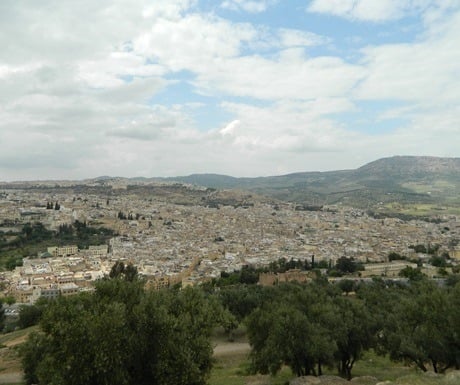 A guide will tell you about the citys history while leading you through the maze of alleyways. Along the way, youll unexpectedly arrive at intricately decorated mosques, madrasas (Islamic school buildings) that have been standing for centuries and huge tanneries that stretch out in a hive pattern below you. Joining a local family for a cookery lesson is a great introduction to Moroccos distinctive cuisine and life in Fez. Youll make a tagine, share mint tea and visit a local bakery, where families take their dough to be cooked in a communal oven.
The Sahara Desert
A visit to the desert adds another dimension to your Morocco trip, and the peace and seclusion here offer a stark contrast to Marrakeshs chaos. Venturing to the Erg Chebbi dunes, on the edge of the Sahara, does take a journey of several hours from whichever direction you approach. But riding a camel through golden dunes at sunset, gazing up at an uninterrupted night sky from your camp and rising early to watch the sun bring colour to the shifting sands are opportunities that dont often come your way.
During the day, you can visit a nomadic family who live in this harsh environment as their ancestors would have for centuries. Theyll welcome you into their simple but homely tents, which are made of camel skin or bamboo. With your guide acting as translator, youll be able to ask the family about their lifestyle and perhaps try weaving on their traditional loom, which the women use to make rugs for sale in the towns and cities.
Chefchaouen
Set in the Rif Mountain region in northern Morocco, Chefchaouen is renowned for its beauty and relaxed, Bohemian atmosphere. Nicknamed the Blue Pearl, the citys blue and white buildings are instantly recognisable and very photogenic. Chefchaouen acts as an antidote to Moroccos busier cities. It receives far fewer visitors than Marrakesh, and its countryside surroundings add to the tranquil atmosphere. Christians were only allowed to enter the city from 1920, and youll notice strong Arabic and Andalusian influences in the architecture and food, but without the French feel found elsewhere in Morocco.
A guide will tell you about the citys history while leading you through the maze of alleyways. Along the way, youll unexpectedly arrive at intricately decorated mosques, madrasas (Islamic school buildings) that have been standing for centuries and huge tanneries that stretch out in a hive pattern below you. Joining a local family for a cookery lesson is a great introduction to Moroccos distinctive cuisine and life in Fez. Youll make a tagine, share mint tea and visit a local bakery, where families take their dough to be cooked in a communal oven.
The Sahara Desert
A visit to the desert adds another dimension to your Morocco trip, and the peace and seclusion here offer a stark contrast to Marrakeshs chaos. Venturing to the Erg Chebbi dunes, on the edge of the Sahara, does take a journey of several hours from whichever direction you approach. But riding a camel through golden dunes at sunset, gazing up at an uninterrupted night sky from your camp and rising early to watch the sun bring colour to the shifting sands are opportunities that dont often come your way.
During the day, you can visit a nomadic family who live in this harsh environment as their ancestors would have for centuries. Theyll welcome you into their simple but homely tents, which are made of camel skin or bamboo. With your guide acting as translator, youll be able to ask the family about their lifestyle and perhaps try weaving on their traditional loom, which the women use to make rugs for sale in the towns and cities.
Chefchaouen
Set in the Rif Mountain region in northern Morocco, Chefchaouen is renowned for its beauty and relaxed, Bohemian atmosphere. Nicknamed the Blue Pearl, the citys blue and white buildings are instantly recognisable and very photogenic. Chefchaouen acts as an antidote to Moroccos busier cities. It receives far fewer visitors than Marrakesh, and its countryside surroundings add to the tranquil atmosphere. Christians were only allowed to enter the city from 1920, and youll notice strong Arabic and Andalusian influences in the architecture and food, but without the French feel found elsewhere in Morocco.
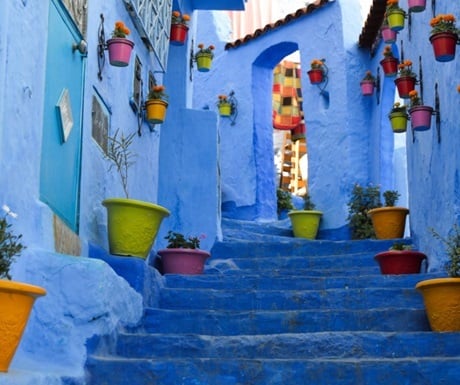 You can stroll the narrow streets that wind up and down the hillside in both the old medina and the new town, stopping to browse locally made crafts such as woven baskets and woollen clothing. The fresh goats cheese sold here is delicious, and there are animated local markets where you can join in with everyday life in this part of Morocco.
The High Atlas Mountains
Just half an hours drive from Marrakesh, the High Atlas Mountains seem like a world away as hectic city streets are replaced with deep valleys, green sloping mountains and tiny villages terraced onto the steep hillsides. Home to North Africas highest peak, Jebel Toubkal, the High Atlas run across central Morocco and are easier to access than the Middle Atlas range in the north and Anti Atlas in the south. Roads wind around sheer-sided bends, giving you glimpses of rock-strewn rivers below where local people often wash their clothes.
You can stroll the narrow streets that wind up and down the hillside in both the old medina and the new town, stopping to browse locally made crafts such as woven baskets and woollen clothing. The fresh goats cheese sold here is delicious, and there are animated local markets where you can join in with everyday life in this part of Morocco.
The High Atlas Mountains
Just half an hours drive from Marrakesh, the High Atlas Mountains seem like a world away as hectic city streets are replaced with deep valleys, green sloping mountains and tiny villages terraced onto the steep hillsides. Home to North Africas highest peak, Jebel Toubkal, the High Atlas run across central Morocco and are easier to access than the Middle Atlas range in the north and Anti Atlas in the south. Roads wind around sheer-sided bends, giving you glimpses of rock-strewn rivers below where local people often wash their clothes.
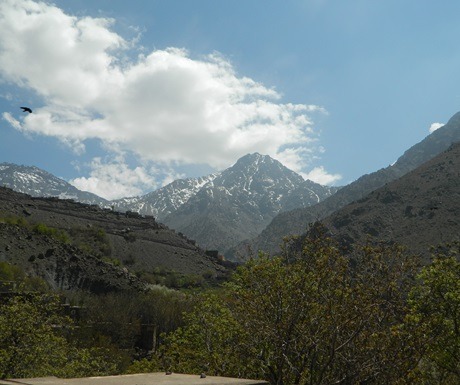 The mountains are predominantly populated by Berbers an indigenous ethnic group who have lived here for thousands of years. Visiting a Berber village in the mountains will give you an idea of what life is like in rural Morocco and how it contrasts with city living. With a guide, you can enjoy a short walk to one of the villages, passing wheat fields, simple adobe houses and animals such as chickens, donkeys and cows.
A local family will welcome you into their home for a traditional lunch of freshly baked bread and butter, olives and hard boiled eggs, all washed down with a refreshing glass of mint tea.
Essaouira
A windswept seaside town on Moroccos west coast, Essaouiras laid-back atmosphere, historic fishing port and long-established art scene appeal to people looking to escape the heat and the crowds of Marrakesh and enjoy a few days of relaxation. The fresher temperatures make it comfortable to stroll around the medina, which is far easier to navigate than those of Fez and Marrakesh. Moving through the streets, youll pass whitewashed buildings with brightly decorated doorways, art galleries displaying paintings of local scenes and shops selling hippy-style clothing, thuya wood trinkets and patterned rugs.
The mountains are predominantly populated by Berbers an indigenous ethnic group who have lived here for thousands of years. Visiting a Berber village in the mountains will give you an idea of what life is like in rural Morocco and how it contrasts with city living. With a guide, you can enjoy a short walk to one of the villages, passing wheat fields, simple adobe houses and animals such as chickens, donkeys and cows.
A local family will welcome you into their home for a traditional lunch of freshly baked bread and butter, olives and hard boiled eggs, all washed down with a refreshing glass of mint tea.
Essaouira
A windswept seaside town on Moroccos west coast, Essaouiras laid-back atmosphere, historic fishing port and long-established art scene appeal to people looking to escape the heat and the crowds of Marrakesh and enjoy a few days of relaxation. The fresher temperatures make it comfortable to stroll around the medina, which is far easier to navigate than those of Fez and Marrakesh. Moving through the streets, youll pass whitewashed buildings with brightly decorated doorways, art galleries displaying paintings of local scenes and shops selling hippy-style clothing, thuya wood trinkets and patterned rugs.
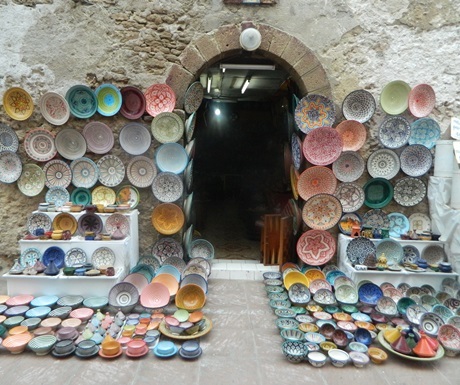 Head to the port early in the morning to watch fishermen unload their catch in front of local people waiting to barter for their lunch. Youll also see boat builders hammering away at their vessels and seagulls circling and diving around the fishermens blue boats. Lined up along the port are outdoor fish grill restaurants, where you can try some of the seafood for yourself the prices are reasonable, and the freshness of the fish is evident in the taste.
The Road of 1,000 Kasbahs
The section of land between Marrakesh and the desert sees the rocky mountains and green valleys of the High Atlas gradually change to dusty hills and gravelled desert plains. Cutting through this land, the route known as the Road of 1,000 Kasbahs gives you a view into Moroccos past. Youll pass through ancient settlements such as Skoura and Ouarzazate, which are set in a strategic location between three oasis valleys (the Draa, the Dades and the Ouarzazate).
Head to the port early in the morning to watch fishermen unload their catch in front of local people waiting to barter for their lunch. Youll also see boat builders hammering away at their vessels and seagulls circling and diving around the fishermens blue boats. Lined up along the port are outdoor fish grill restaurants, where you can try some of the seafood for yourself the prices are reasonable, and the freshness of the fish is evident in the taste.
The Road of 1,000 Kasbahs
The section of land between Marrakesh and the desert sees the rocky mountains and green valleys of the High Atlas gradually change to dusty hills and gravelled desert plains. Cutting through this land, the route known as the Road of 1,000 Kasbahs gives you a view into Moroccos past. Youll pass through ancient settlements such as Skoura and Ouarzazate, which are set in a strategic location between three oasis valleys (the Draa, the Dades and the Ouarzazate).
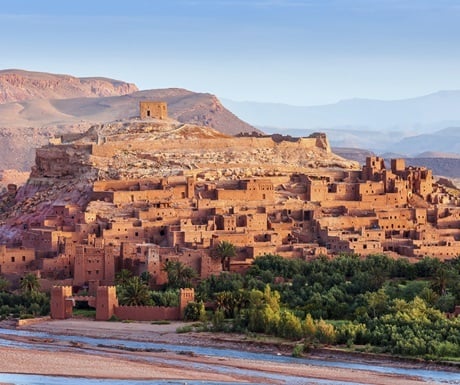 Here, sultans once built fortifications to assert their dominance over the region. While most of these have crumbled away, youll come across a few well-preserved kasbahs (forts) and ksars (fortified towns), rising like giant sand castles from the rock. The most impressive is Ait Ben Haddou, a large ksar consisting of six different kasbahs. A UNESCO World Heritage Site, it dates back to the 11th century and is made from the local areas reddish rock and soil. Many families would have lived in houses within its defensive walls, but now only a few remain. You can explore inside the ksar, where the town has barely changed over the centuries. The tangible history here has made the ksar popular with film makers; its appeared in Gladiator, Lawrence of Arabia and several other blockbusters.
Craig Burkinshaw is Founder of Audley Travel.
If you would like to be a guest blogger on A Luxury Travel Blog in order to raise your profile, please contact us.
Here, sultans once built fortifications to assert their dominance over the region. While most of these have crumbled away, youll come across a few well-preserved kasbahs (forts) and ksars (fortified towns), rising like giant sand castles from the rock. The most impressive is Ait Ben Haddou, a large ksar consisting of six different kasbahs. A UNESCO World Heritage Site, it dates back to the 11th century and is made from the local areas reddish rock and soil. Many families would have lived in houses within its defensive walls, but now only a few remain. You can explore inside the ksar, where the town has barely changed over the centuries. The tangible history here has made the ksar popular with film makers; its appeared in Gladiator, Lawrence of Arabia and several other blockbusters.
Craig Burkinshaw is Founder of Audley Travel.
If you would like to be a guest blogger on A Luxury Travel Blog in order to raise your profile, please contact us.Did you enjoy this article?
Receive similar content direct to your inbox.


I’ve been to all the places (sadly except Essaouira) and absolutely agree with what you said! My fav has got to be the Sahara desert and I hope to go back someday
Dear Craig,
Thank you for sharing this informative article that highlights some of the best places in my Country Morocco.
This piece of information would of been even more complete of you included the Atlantic Coast and the deep south.
I think that many travellers will actually find the region of Taroudant, Tafrouat, Agadir and Sidi Ifni more than worth the visit. In fact this is one of my favourite places.
that’s what’s great in Morocco. In a 10-day trip, visitors can really have diverse activities, exploring the desert, surfing, chilling in gorgeous beaches, hiking the mountains…oh and the Moroccan food! One of the best culinary experiences once can have.
Thanks for highlighting all that!
Thanks for sharing! all these places are worth a visit, including the waterfalls of Ouzoud
Always wondered if this infinite desert is more than Marrakesh, and fro, this write up my belief is calcified. Thanks for a wonderful Blog.
absolutely, the desert is huge and bigger than Marrakech. Unfortunately, the grand Sahara, in Morocco, is not safe. Therefore, tour agencies in Morocco take tourists only to the safest places like Merzouga and Zagora.
Thank you for this post featuring some Morocco places that is worth visiting. I am Moroccan and I can guarantee you tha There are much more places that deserve more attention than Marrakech.